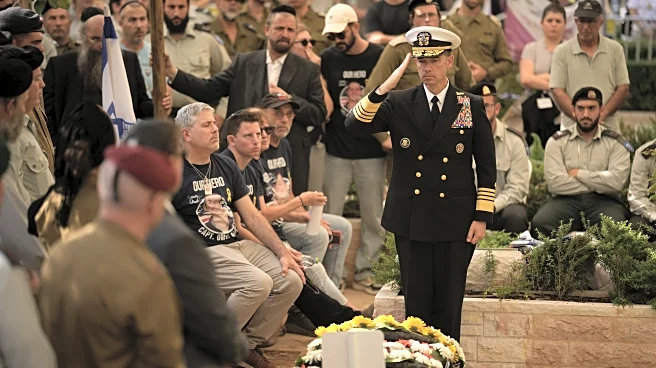What's Happening?
On June 24, 1944, Marine Corps Lt. Gen. Holland M. Smith made a historic decision by relieving Army Maj. Gen. Ralph C. Smith of his command during the Battle of Saipan. This unprecedented action occurred
amidst intense combat, as the 27th Infantry Division, a New York National Guard unit, struggled to advance through challenging terrain against formidable Japanese defenses. The division's slow progress in the center of the island left Marine divisions on the flanks exposed, prompting Holland Smith to take drastic measures. The decision sparked a significant interservice controversy, with Army officers viewing the relief as a slight against their branch, leading to strained relations between Army and Marine personnel.
Why It's Important?
The relief of Maj. Gen. Ralph C. Smith by Lt. Gen. Holland M. Smith had profound implications for U.S. military operations in the Pacific. It highlighted the intense rivalry and differing tactical approaches between the Army and Marine Corps, affecting interservice cooperation. The incident underscored the challenges of coordinating large-scale operations involving multiple branches of the military. The controversy also influenced command decisions in subsequent battles, such as Okinawa, where Holland Smith was sidelined due to the animosity generated by the Saipan incident. This event serves as a historical example of the complexities and tensions that can arise in joint military operations.
What's Next?
Following the relief, Army Lt. Gen. Robert C. Richardson convened a board of inquiry, which found that while Holland Smith had the authority to relieve Ralph Smith, the action was not justified by the facts. The board's findings contributed to ongoing debates about the appropriateness of the relief and the broader implications for Army-Marine relations. The controversy continued to affect command relationships throughout the remainder of World War II and into later conflicts, such as Korea and Vietnam. The incident remains a point of discussion in military history, illustrating the challenges of interservice command dynamics.
Beyond the Headlines
The Saipan command crisis revealed deeper issues of prejudice and bias within military leadership. Holland Smith's actions were influenced by his contempt for the Army, which affected his judgment and decision-making. The incident also highlighted the need for understanding and respecting different tactical doctrines and training methods between military branches. The media coverage of the event further fueled public perceptions and interservice rivalry, with contrasting narratives from Army and Marine perspectives. This historical episode continues to be studied for its lessons on leadership, cooperation, and the impact of personal biases in military operations.













